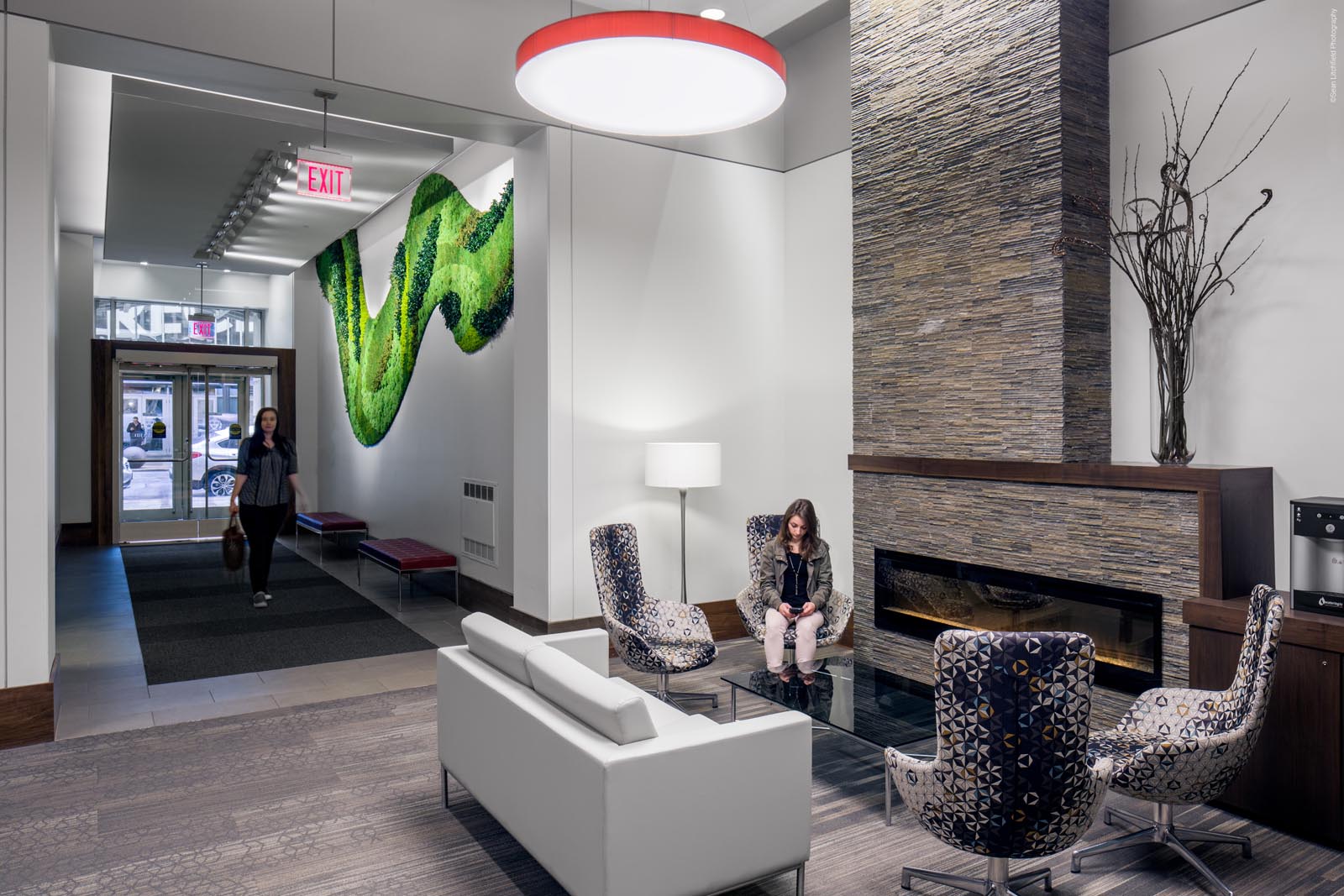Garden on the Wall®
Biophilic Design for Educational Environments: Nurturing Learning Through Nature

The Natural Connection to Learning
Education is a cornerstone of human development, and the spaces where we learn play a vital role in shaping our cognitive growth and well-being. Biophilic design, which integrates natural elements into built environments, is emerging as a powerful tool in education. By bringing nature indoors through preserved greenery, we create spaces that inspire curiosity, ease stress, and support mental clarity all essential for learning.
Key Benefits of Biophilic Design in Education
Biophilic design in schools is more than aesthetic it has measurable benefits. Exposure to nature enhances attention, memory, and problem-solving. It also reduces stress by lowering cortisol levels, creating calmer classrooms that support focus and emotional regulation. Nature-inspired environments boost creativity and imagination while promoting overall well-being, including improved mood and reduced fatigue. Students in biophilic classrooms often perform better academically, with higher test scores and graduation rates.
Implementing Biophilic Design in Educational Spaces
Classrooms
Preserved moss walls can serve as soothing focal points that create calm, grounded environments. Natural materials like wood and stone in furniture and finishes foster warmth and familiarity, while nature-inspired patterns in flooring or wall coverings help tie the space to the natural world.
Libraries and Study Areas
Design quiet reading nooks surrounded by preserved plants to promote focus and relaxation. Where natural light is limited, full-spectrum lighting can replicate its benefits. Botanical artwork and preserved displays enhance the space without adding maintenance concerns.
Corridors and Common Areas
Hallways and shared spaces offer opportunities to immerse students in natural beauty. Preserved plant installations can line walkways to create a nature-inspired journey through the school. Architectural forms that mimic natural curves and patterns can subtly connect students to nature, while "pocket parks" with preserved gardens provide restorative pauses between classes.

Outdoor Learning Spaces
Create outdoor classrooms framed by low-maintenance living plant borders that offer vibrant, natural surroundings without demanding constant upkeep. Add educational nature trails with signage about local ecosystems and incorporate stone seating or natural wood features to blend seamlessly with the landscape.
Administrative Areas
Preserved plant dividers can create visual privacy in office spaces while maintaining openness. Adding preserved greenery to meeting areas supports calmer, more creative discussions, fostering a more positive and productive school culture.
The Unique Advantages of Preserved Nature in Education
Preserved nature provides several practical benefits for educational settings. It requires little to no maintenance, no watering, sunlight, or pruning making it ideal for high-traffic, low-resource environments. These installations remain vibrant year-round, creating consistent, appealing spaces regardless of season. Because they don't release pollen, preserved plants are allergy-friendly. They also offer design flexibility from walls to sculptural accents adapting easily to any space or grade level. Additionally, preserved gardens serve as interactive displays that allow students to explore plant structures and natural patterns up close.
Designing for Different Educational Levels
Biophilic design can be tailored across age groups:
Early Childhood Education: Use vibrant preserved plant installations that engage the senses and spark curiosity. Nature-themed reading corners offer cozy spaces for stories and quiet moments.
Elementary Schools: Incorporate hands-on preserved nature elements that children can safely explore. Use natural textures and patterns to divide classrooms into zones for different learning activities.
Middle and High Schools: Design collaborative areas with preserved greenery backdrops that support social learning and group work. Quiet study zones with calming natural elements help students focus during independent study or test preparation.
Higher Education: In universities and colleges, use refined biophilic design in lecture halls and lounges to foster professionalism and inspiration. Preserved nature in labs and research areas helps reduce stress and stimulates creativity during intensive work.
Case Study: The Green School Concept
While we won’t highlight a specific school, the global “Green School” movement showcases the power of biophilic design. These schools integrate natural elements both living and preserved into every facet of their architecture. Students in these immersive environments often experience better academic performance, higher environmental awareness, and improved emotional well-being.
Challenges and Considerations
Despite its many benefits, implementing biophilic design comes with challenges. Budget constraints may be a barrier at the outset, though preserved installations often prove cost-effective over time. Accessibility must be a priority natural features should support, not obstruct, students with mobility or sensory needs. Safety is essential; all preserved materials must meet standards for use in schools. Lastly, designers should consider cultural significance when choosing specific plants or natural symbols to ensure sensitivity in diverse communities.
Conclusion: Cultivating Natural Learning Environments
Incorporating biophilic design into education is more than a trend it’s a meaningful investment in student and educator well-being. Preserved nature installations bring long-lasting, low-maintenance beauty into learning spaces, supporting better focus, creativity, and emotional balance. As awareness of the environment’s impact on learning grows, schools and universities will increasingly turn to biophilic design as a foundational strategy. Preserved greenery offers a practical, lasting solution to bring nature indoors, enriching educational settings for every age group. By embracing biophilic design, we’re not just shaping better classrooms we’re nurturing future generations in environments that promote both knowledge and connection to the natural world.
For more information on this subject, read this article: Biophilic Design for Inclusive Spaces: Creating Universal Nature Connections and other related information, please visit our website: www.gardenonthewall.com
Related Posts

Biophilic Design in Healthcare: Beyond Aesthetics to Healing

Biophilic Design in Retail Spaces: Enhancing the Shopping Experience


